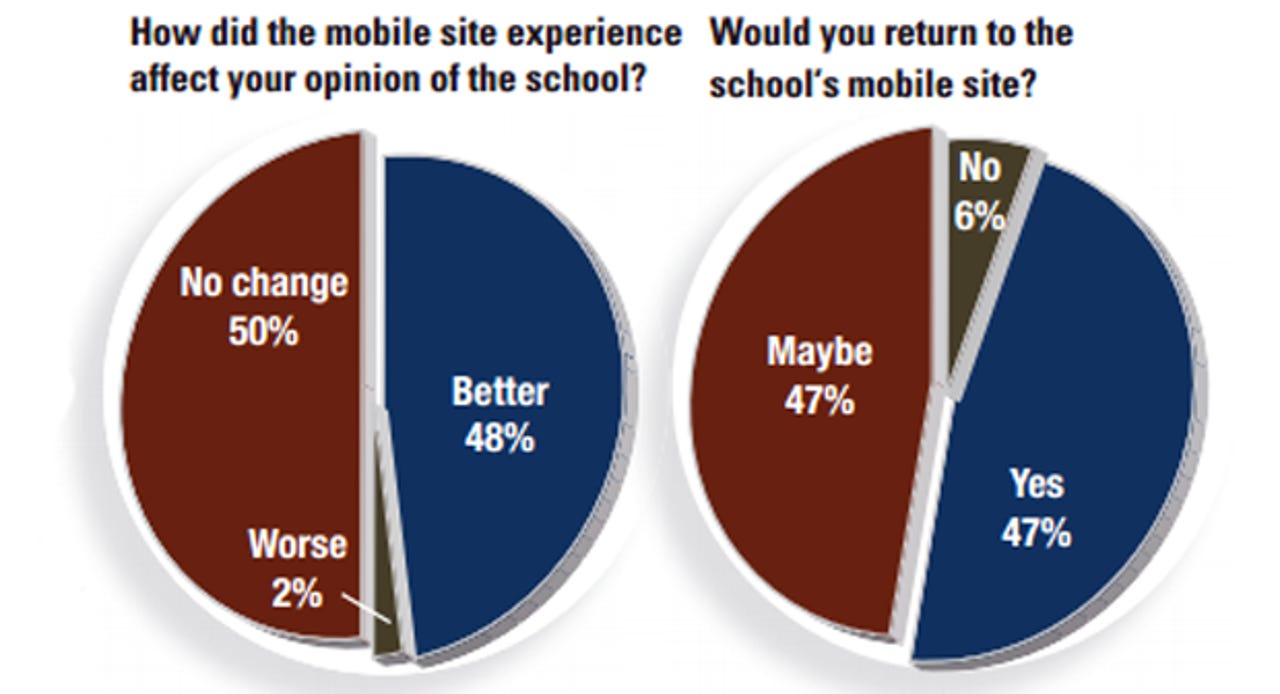Mobile behaviors of college students explained

Open days, high school talks and advisory sessions were once the main methods of researching universities. However, now more students than ever are taking to the Internet for research purposes, and universities are expected to have these faculties available to potential students.
A report (.pdf) by conducted by Noel-Levitz, OmniUpdate, CollegeWeekLive, and NRCCUA (National Research Center for College & University Admissions) comments on the trends of mobile use in a student's search to find the right university for them to continue on to higher education.
In order to keep up, academic institutions must take in to consideration what modern students expect of them, and harness this technology efficiently to stay ahead in recruitment drives.
The survey involved approximately 2,300 college-bound high school students and their use of mobile technology in the quest for the right college. 94 percent stated that they have use of a mobile device, including mobile phones, smartphones and tablets, and that they use this technology at least once per week.
But how many use these devices to research colleges, and how can mobile technology impact a prospective student's choice?
According to the survey, over half of students have browsed a campus website through a mobile device. However, only 4 percent stated they used an iPad or tablet, which mean that most browsing is conducted through machines with smaller screen sizes and resolutions. Therefore, academic institutions should keep this in mind and make sure their websites are optimized for a variety of smaller screens for mobile use.
When browsing these websites, the following was considered by students as the 'most valuable' elements available:
- Academic program listings
- Cost and scholarship calculators
- A calendar containing important dates and deadlines
- Specific details concerning academic programs
- An application process summary
- Online application forms
Considering that details about academic programs and application forms were listed as the top desired facilities on mobile campus websites, it appears unlikely a student would want to scroll through pages of information or complete an application form on a smaller device -- however, they may wish to browse through the content 'on the go' before proceeding further on a desktop, or forward an application form to an email address.

Students also mentioned other mobile content as 'somewhat valuable':
- Forms to receive more information (by e-mail, postal mail, or text message)
- Scheduling interviews and campus open day visits
- An interactive campus map
- A tour of hall facilities
- Multimedia, such as videos on campus life
- Live instant message communications
- Links to a school's social media, including Facebook and Twitter.
For the majority of students, the mobile experience is a positive one. 93 percent of respondents said they were able to find the information they wanted while browsing on a mobile device. In addition, 48 percent stated that their mobile experience enhanced their opinion of the school in question.
By keeping a mobile website optimised, it is possible that this trend may entice more students to consider a particular school in their quest -- if an academic institution recognises that many young people expect quick and easily accessible information to be available, then furthermore it may infer that the school is modern and willing to invest in and cater to its students' needs.
In addition to accessing college sites using mobile technology, respondents also discussed their use of social media, which is something that academic institutions can exploit and promote further:
- Provide an experience that is optimized for mobile users.
- Don’t worry about apps just yet, just make sure your mobile website version is up to standard.
- Make social media worthwhile.
- Test, test, test -- there are many platforms available for mobile use, so it is important they are all functional and compatible.
- Keep your mobile site in sync with your main site.
Image credit: Noel-Levitz Inc.
Related: